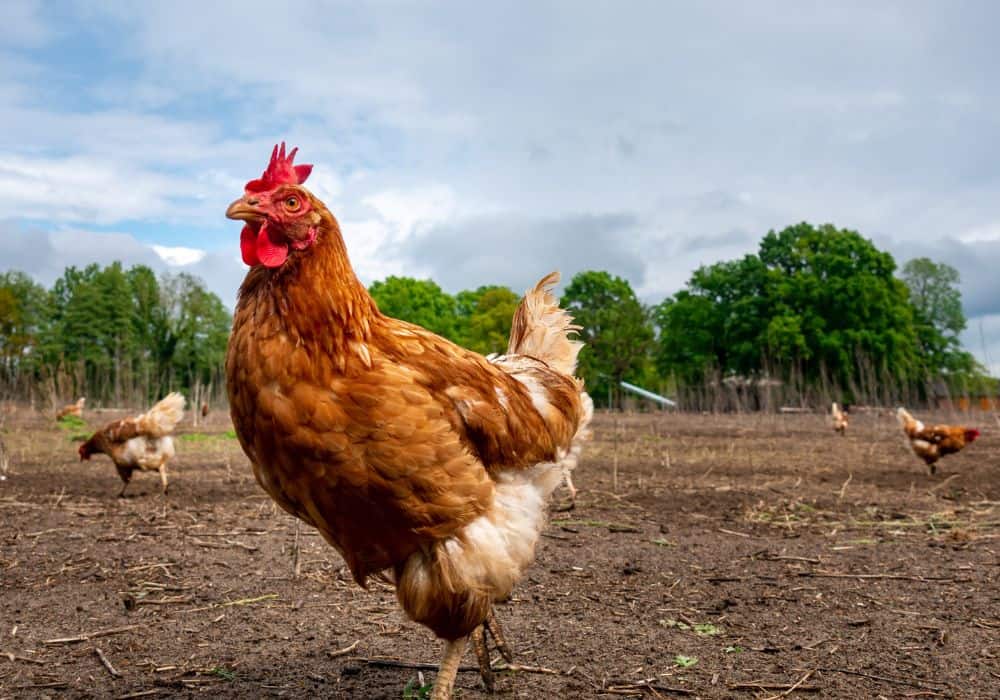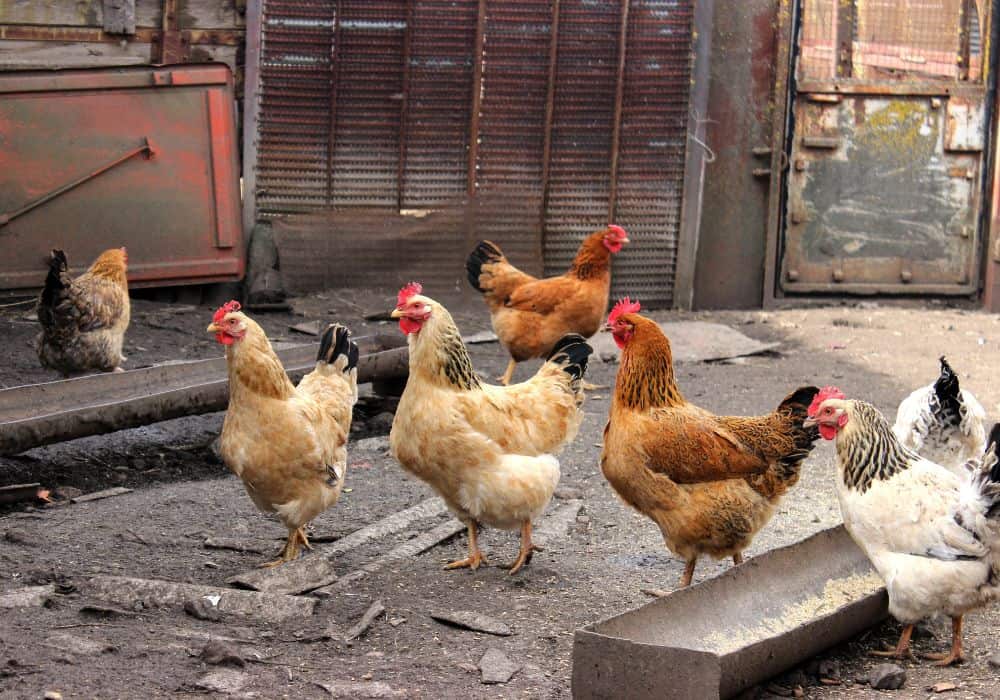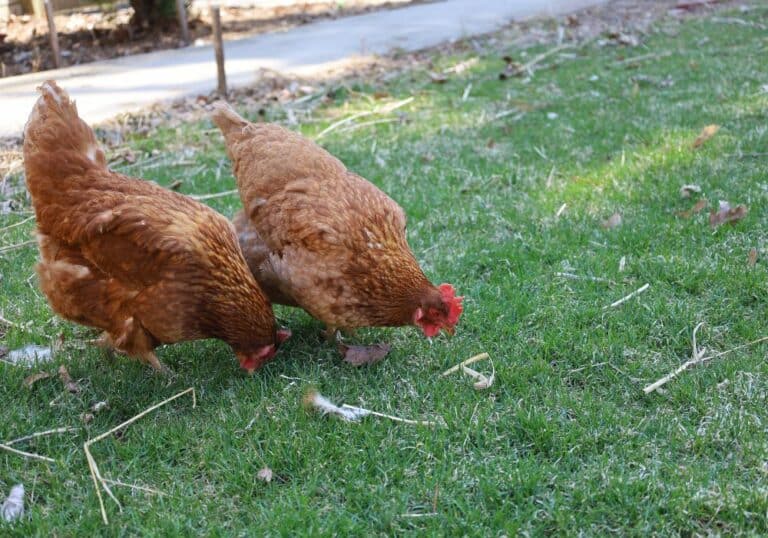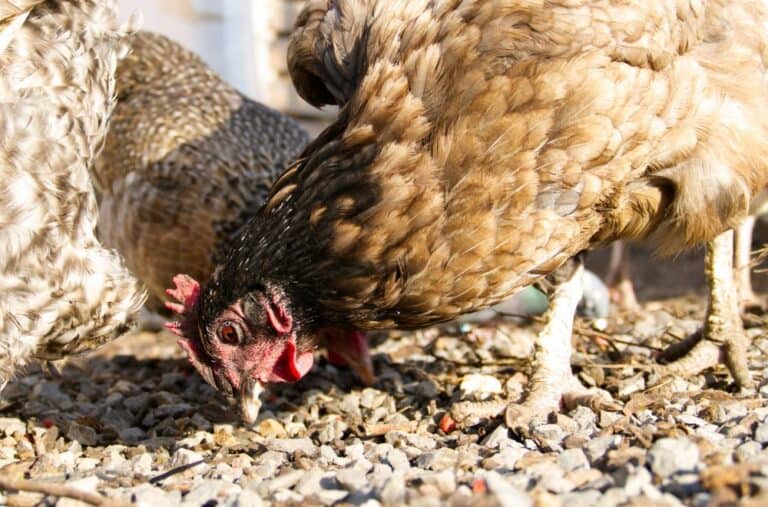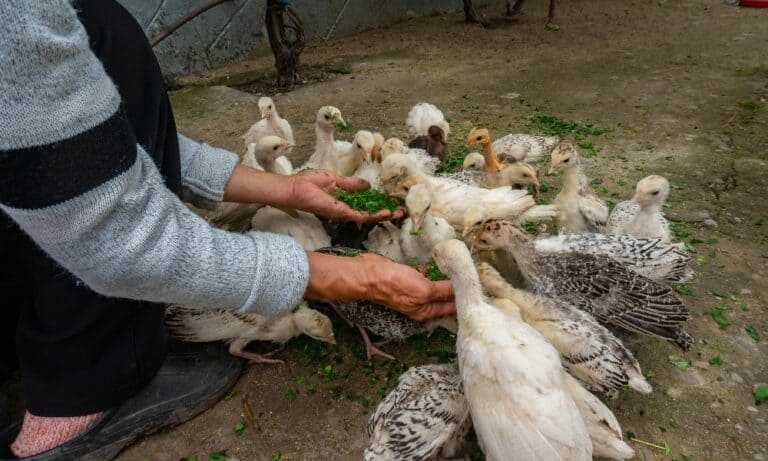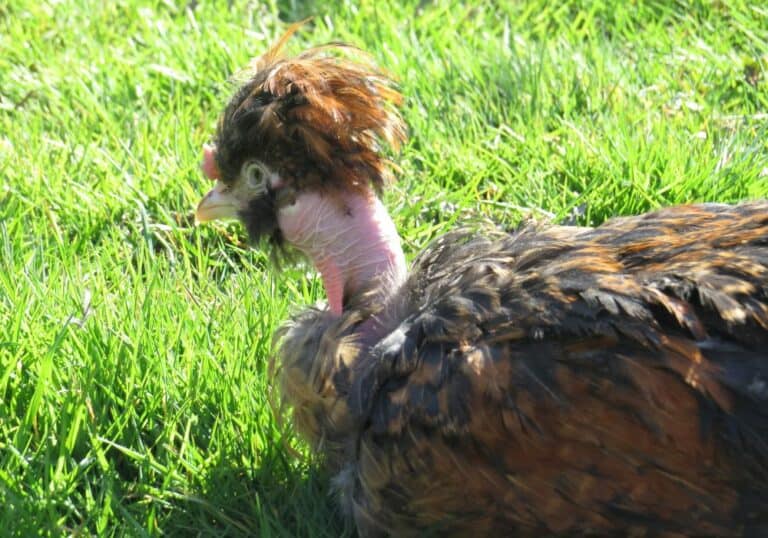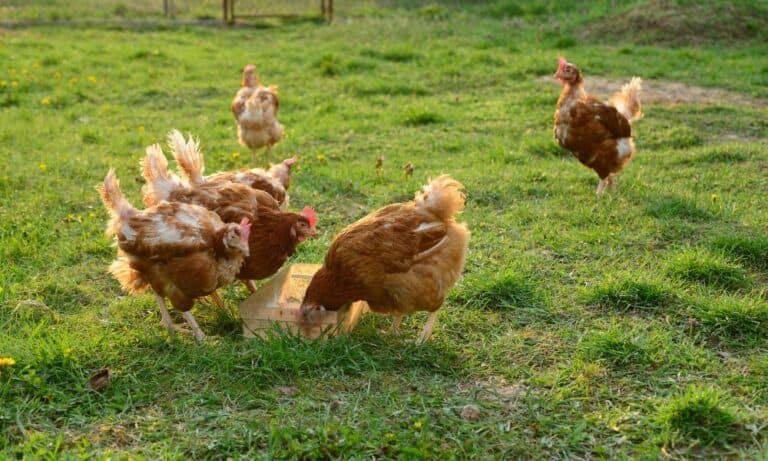Getting your first batch of baby chicks is a dream come true. They look super cute and you feel the need to baby them forever, but just like kids, you’ll be amazed at how fast they grow.
Each chicken has a unique growth rate, but all of them go through the same phases of chick, teenager, and fully-grown adult chicken. But how fast do chickens grow? How long do chicken owners have to wait to see that first egg?
Let’s take a deep dive into the different stages of chicken growth so that you can be prepared to see how fast your chicks develop in the weeks after they hatch. Keep scrolling to learn more about how fast chickens grow.
Faster vs Slower Growing Chickens
The first thing you should know about how fast chickens grow is that it’s mostly determined by a chicken’s breed. Some chicken breeds simply grow faster than others.
Many factors come into play when determining what makes a breed develop slower or faster than another. Things like the purpose of the chickens on the farm as well as their size largely dictate how fast they’ll grow.
Let’s take a closer look at fast and slow-growth chickens.
Fast-Growing Chickens
Most chicken breeds with fast growth rates are those that are bred to become meat one day. These meat chickens are called “broiler” chickens, and their main job is to fatten up, grow quickly, and then meet the market demand for delicious, nutritious chicken meat.
The popular Cornish Cross is one example of a broiler chicken that takes less time to grow. In fact, this is the chicken breed that grows the fastest. In as little as eight weeks, a Cornish Cross can grow into an adult chicken with sizable breasts and thighs weighing 12 lbs.
Slow-Growing Chickens
On the other hand, slow-growing chickens are usually those that come from heritage breeds, aka a breed naturally mated by an American Poultry Association Standard breed.
While broiler chickens are meant to grow fast, meet the ideal market weight for chickens, and then be turned into meat as soon as possible, heritage breeds are meant to grow slowly to develop outstanding flavor.
They live a longer outdoor life so that they can forage natural proteins, like insects and small animals, to make their flavor more robust and tastier once it’s their turn to become meat.
Examples of slow-growing chickens include Buff Orpingtons (arguably the most popular heritage chicken in the United States), Brahma chickens, and Red Rangers.
The Timeline of the Average Chicken’s Life
It’s incredibly fulfilling to watch your chicken grow up. Just a few weeks after watching them hatch from their eggs and emerge into the farm in their teenage years, they’ll turn into adults with milestones like their first egg, first molt, and their retirement years.
Watch this quick video to know the different milestones of a chicken’s life from baby chick to adult chicken, and how they look in each stage:
Want to know what milestones to expect from your chickens, and when to expect them? Here’s a timeline of what your chicken’s life will look like.
1. Week 0: Fertilized Egg
Once a hen and rooster mate, the fertilization process happens. After just 25 hours of their mating, an egg starts to form in the hen and she lays it. From there, it takes about three weeks for a chick to fully develop in the fertilized egg.
During this stage, it’s important to keep the eggs in an incubator to ensure that their environment is warm enough to aid in their development. When they’re ready, they’ll hatch on their own.
2. Week 1-4: Baby Chicks
When the hatchlings come out of their eggshells, they’re known as day-old chicks. But these developed chicks only really look like babies in their first week outside of the eggs. At week two, they’ll already look like tiny chickens.
Baby chicks need to be put in a brooder along with their siblings. They must also be given a heat lamp to keep them warm. It’s important to feed than a chick starter feed that is rich in protein, probiotics, and amino acids so that they can grow strong and healthy early in their lives.
3. Week 5-15: Pullets and Cockerels (Teenagers)
By around week five, your chicks will become teenagers. Males are called cockerels, while females are called pullets.
At this point, you can transition the chickens out of their brooder. Just make sure they at least have their first layer of feathers fully developed before you let them explore outside the brooder. Aside from feathers, they’ll also grow their wattles. Cockerels will grow their combs and spurs as well.
These teenage chickens won’t need their heat lamp anymore either. However, they still need to be on their started feed (but they can also have a taste of their parents’ layer feed if they want!).
4. Week 16: Adulthood + First Egg
By week 16, the pullets will become full-grown hens and cockerels will be known as roosters.
For hens, one of the most exciting parts of finally becoming an adult is laying their first egg. Many chicken raisers consider this to be the most important milestone in a female chicken’s life. Some think they have to wait until week 18 to look for eggs, but this can come as early as week 16.
Check your hens’ nesting boxes daily to see if they’ve laid their first farm-fresh egg. Make sure they’re eating from the layer feed too so that they have all the nutrients they need to develop healthy eggs. And when that first egg finally comes, you’ll be ecstatic!
5. Week 17 and Beyond: Egg-Laying Phase
From week 17 onwards, your adult chickens’ main job is to lay eggs. Hens and roosters are meant to mate and produce more chicks. Alternatively, your hens can start laying unfertilized eggs that you can use in the kitchen or sell as poultry goods.
The older your hens get, the lower their egg-laying productivity will become. Roosters will also show a decline in their fertility levels.
6. Month 18: Molting
At around 18 months, your hens will experience their first “molting”—the recovery time when hens stop laying eggs and shed old feathers. This usually happens when the days are shorter, like in the autumn.
When the hens are molting, it’s important to feed them tons of protein so that they can grow back their feathers. You should also keep their stress levels low as they recuperate. That means less handling so that they can have their relaxation time in the chicken coop.
7. Year 6 and Above: Retirement
At age six, your chickens will likely retire from egg production. Instead, their role will be to provide company at the farm. You can also use them for other poultry products, such as meat and animal feed. If you care for your old chickens well, they can live for up to ten years!
Factors that Make a Chicken Grow Faster
1. Genetics
As mentioned earlier, genetics plays a huge role in the growth of chickens. The size of their muscles, how much they eat, and the weight they eventually get to in their adulthood is always linked to their breed.
Heritage breeds are usually heavier and grow slowly, while broiler chickens are medium-sized and grow extremely quickly to fulfill their important role in commercial meat production.
2. Nutrition
If a chicken eats well, it will grow big and healthy in a shorter time. It’s important to provide regular feed rich in proteins, carbohydrates, and fiber to your chickens so that they develop as expected and grow in the time you need them to.
Aside from their regular feed, you can also treat your chickens to yummy, nutrient-dense fruits and vegetables that have tons of vitamins and minerals.
3. Temperature of Environment
Chickens that live in places with lower temperatures tend to eat more, which means they’ll grow faster too. See, when it’s extremely cold, chickens will naturally feel the need to eat more than usual so that they can regain energy and increase their body temperature.
During the winter, you should consider giving your chickens access to free-range places. If they forage their own food, they’ll be able to find nutritious proteins in the wild that can make them grow faster, but still in a way that is as organic as possible.
Conclusion
Chickens grow quite fast and reach their adult stage in about four or so weeks. However, some chickens grow faster than average—like broiler chickens—and breeds that take their time and grow slowly—like heritage breeds.
The development of a chicken’s life is very rapid in its first few months. In just a little over a month, you’ll see your chicks grow into pullets and roosters. And before you know it, five more weeks will go by, and they’ll turn into a flock of full-fledged adult chickens!
Have any tips to share about what chicken owners can do to help chickens ease into new life stages every few months? Leave a comment below; let’s help each other raise our growing chickens!

